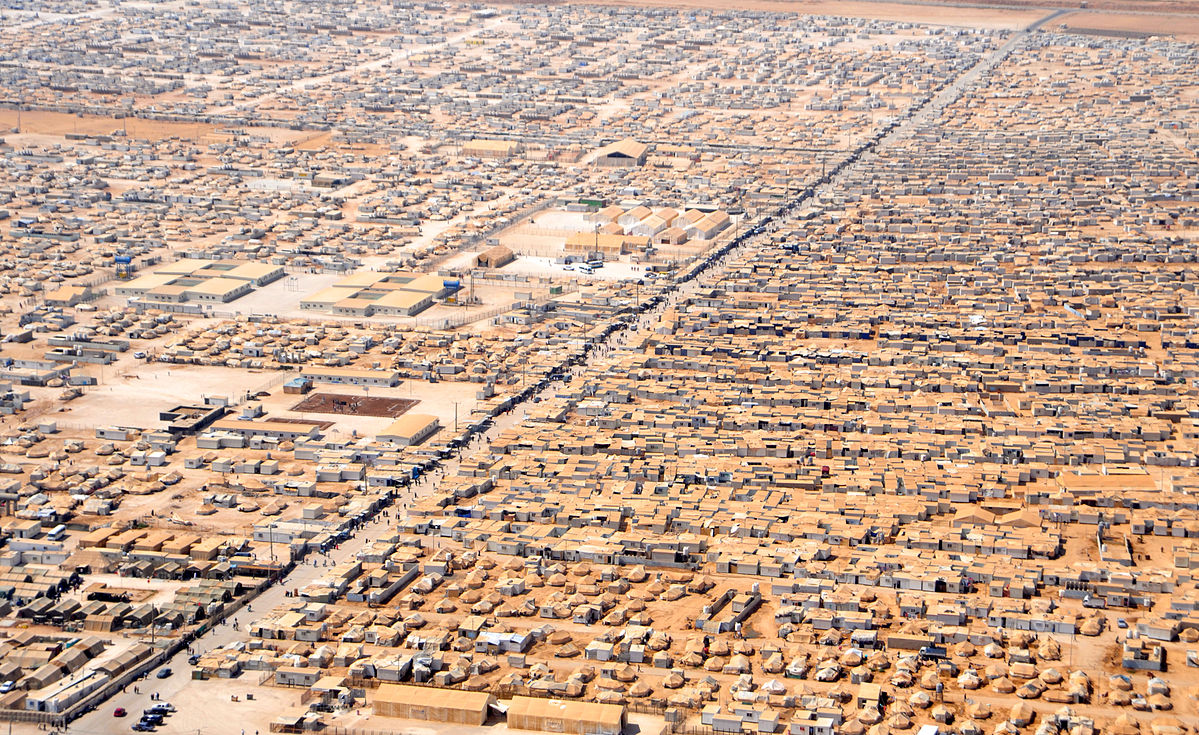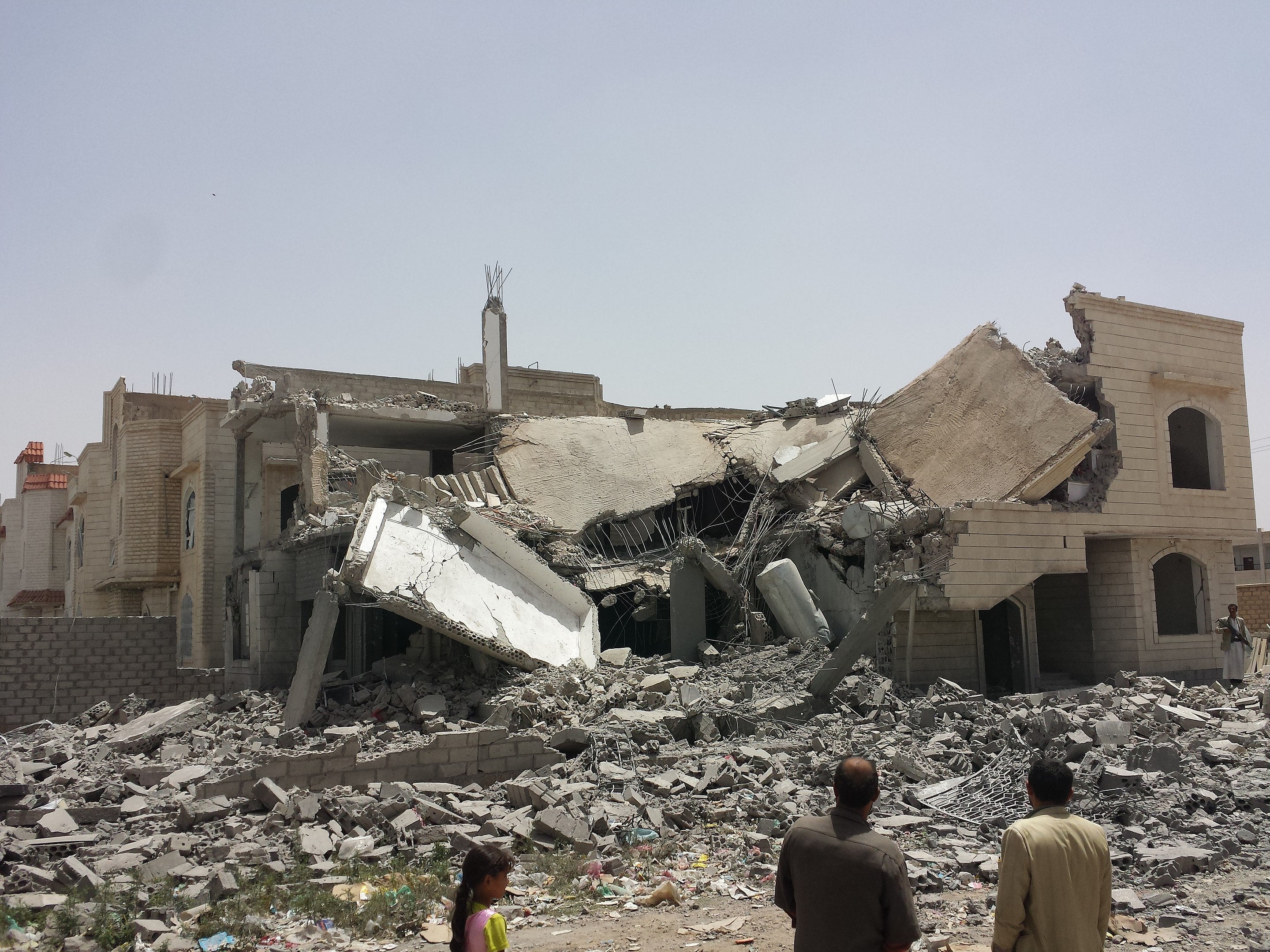Shias against Sunnis, Palestinians against Israelis, tradition against progress - to the list of factors that make our region so explosive we must add a formidable force that is already creating fundamental changes in society, the economy and security: the climate crisis
By Gideon Bacher, Angle - Science and Environment News Agency

As a student and later as a professional on Middle Eastern and Islamic issues, I learned to look at the Middle East through a very specific prism of religion and state relations, politics and faith, history and wars. The dominant opinion was, and still is, that the array of forces in the Middle East is defined by a number of main shapers, among them Islam as it developed from the time of the Prophet Muhammad to the rise of the fundamentalist currents of the Muslim Brotherhood and the various jihad movements.
I was instructed to examine the developments in the modern Middle East in light of the legacy of colonialism and the political division that created the countries of the region, to interweave into it the important elements of the historical and religious rivalry between the Sunnis and the Shiites which is manifested nowadays in the struggle between Iran and its metastases in Iraq, Syria, Lebanon and Yemen and Saudi Arabia and Egypt and the Sunni Arabs. I read in the press and research literature that the Arab-Israeli conflict (which for many days was reduced to the Israeli-Palestinian conflict) and Israel's confrontation with Iran and Hezbollah are the important conflicts that create reality.
In my eyes, these were the main formative narratives of the Middle East.
Today, I believe that the time has come to change this perception and take a serious, in-depth and clear-eyed look at the new shaper of the Middle East: the climate crisis and the desertification processes and the many environmental problems it entails for the region.
It seems that it is impossible to understand the civil war in Syria and the deep, regional and international entanglement it has created without understanding how climate change and drought were among the significant factors that sparked the rebellion against President Bashar al-Assad. Four years in the forms between 2010-2006 They pushed hundreds of thousands of Syrians to the brink of starvation, caused the mass abandonment of rural areas and the expansion of resentment and bitterness against the government.
The bread riots in Egypt that preceded the overthrow of President Hosni Mubarak can be attributed, in part, to the increase in wheat prices among the world's largest wheat exporters As a result of a global crop failure. This caused a global increase in food prices that seriously hurt the Egyptian citizen whose main component in his diet is pita and bread. The terrible civil war that has been going on for years in Yemen cannot be understood today without the effects of climate change on this country, which contributed a significant part to the depletion of its groundwater and the destruction of agriculture, to the outbreak of diseases such as cholera And recently also to a severe locust attack.
The issue of climate change in the Middle East is also greatly affected by the rapid increase in population in the region, one of the highest in the world, which places a heavy burden on the ability of the countries in the region to produce their own food. In fact, the Middle East already today depends almost entirely on food imports from outside, so any fluctuation or change in the world's food supply systems threatens local food security.
We see the results of this situation even more today following the corona crisis and the economic deterioration that followed it in countries like Syria and Lebanon, which recently suffered another cruel blow in the form of the explosion in the port of Beirut - its main supply artery.
The Food and Agriculture Organization of the United Nations, FAO, already today defines five Middle Eastern countries with significant populations that are on the verge of starvation: Syria, Lebanon, Iraq, Yemen and Sudan. In Sudan, for example, it is estimated thatMore than 10 million people are on the brink of starvation - More than a quarter of the country's residents.

Heat waves and water shortages
In the Middle East there is a high water shortage that affects a wide variety of areas, including the economy. The World Bank estimates that this will lead to a loss of GDP at a rate of 14-6 percent in 2050. This situation leads to conflicts over water, such as the one between Egypt, Sudan and Ethiopia around the Resurrection Dam in Ethiopia. To this must be added Turkey, which systematically drains the Euphrates tributaries in its territory while deducting considerable amounts of water from Syria and Iraq, and Iran, which builds many dams on the Tigris tributaries in its territory, without considering the water shortage it creates in Iraq.
The severe heat wave that hit the Middle East at the end of July 2020 will surely be well remembered in Iraq and Syria. The heat wave that washed over them resulted in terrible temperatures of over 50 degrees throughout Iraq. In Baghdad, a temperature of 51 degrees Celsius was measured. A record temperature of 53 degrees was measured in the Basra area And in Damascus, 46 degrees were measured. This is an unbearable reality for life. And when we look at the climate models predicted during the coming decades, we understand that this is not an unusual phenomenon but in a routine that will characterize the area.
Desertification and loss of agricultural land
Climate change, non-sustainable agriculture, overgrazing and other factors also contribute to a powerful desertification process, which manifests itself in the loss of soil fertility and a reduction in precipitation. Indeed, our region is undergoing a significant process of creeping desertification that steadily increases its rate. The day will not be far away and a significant part of the areas that are currently arable will become wasteland, a fact that will add to the process of migration from the village to the city and from the city to other countries, mainly to Europe.
When you look at the climate models for the Middle East - like that of sea level rise, the problem becomes more critical. With a rise of half a meter in sea level, the Nile Delta will lose 1,800 square kilometers of agricultural land, 3.8 million people will lose their homes and many infrastructures such as roads will be covered in water. With a one-meter rise in sea level, 4,500 square kilometers of agricultural land will be lost, 6.1 million people will lose their homes, and the cities of Port Said and Alexandria will be turned into islands. Similar results will occur at the mouth of the river Shat al Arab in Iraq and the oil-rich Khuzestan region in Iran..

Oil exporters are also expected to be significantly affected by climate change. As the international pressure to abandon the fossil fuels and especially oil and gas found in the Middle East increases, so will the economy of oil and gas exporters be harmed with the increasing shift in the world to renewable energies. Already today, the cost of producing electricity from renewable energy is significantly cheaper in most places in the world than that produced from oil or gas. The dependence that the countries of the region have developed on oil and gas exports as the main and sometimes exclusive source of their budgets will hit them hard. At the same time, attempts to diversify the economy are only partially successful and in the absence of a replacement, they are expected to deteriorate severely. Reducing the use of energy from fossil fuels will also harm the incomes of the millions of foreign workers in the Gulf countries from Egypt, Jordan, Yemen and more.
There is no doubt that the time has come to change the way we analyze the Middle East. The more time passes, the greater the weight of climate change, overpopulation, the process of desertification and the environmental crisis in general will be the factors shaping the region: outbreak wars, large-scale migration will occur, instability due to hunger will shake the region.
It may be difficult at first to recognize the influence of the new designers since the result will be expressed in what the Middle East has been good at for many decades: war, immigration, refugees, etc. But at the root of these are today other reasons, different from what we are used to.
In our view of this situation, we must also understand that in order to prevent the factors of instability mentioned above, the countries of the Middle East must invest in building resilience and adapting to climate change, such as switching to agriculture based on precise irrigation, building heat-proof cities, moving infrastructure away from flood-prone areas, restoring ecosystems, making everything more efficient The issue of water, including massive sewage treatment, diversification of the economy, transition to renewable energies, export of renewable energies - for example through the production of hydrogen gas with solar energy in the deserts of the region and its export as a liquid to developed countries in Europe and Asia. Building cross-border cooperation between the countries of the region and harnessing the international community with its capabilities and resources for this purpose are another necessary aspect of regional preparation for the climate crisis.
The peace agreement with the United Arab Emirates, and hopefully agreements that will be signed with other Arab countries, indicates that this could be the great hour of the State of Israel to share experience, technologies and ideas, to build large-scale cooperation for the benefit of all. In Israel, probably more than anywhere else in the world, abilities, knowledge and ideas have been accumulated that can be used by all the countries of the region in dealing with the climate crisis and it is important that we act proactively to advance them. The climate crisis is a significant shaper of the Middle East already in this period and its weight in this context will only increase in the coming decades. We should start considering him.
The writer is an ambassador and special envoy for climate change and sustainability at the Ministry of Foreign Affairs

7 תגובות
Please move the "disabled" icon to a place where it will not hide text.
I am happy that the Ministry of Foreign Affairs and the newspaper "Zivata" give their opinion on the water problem in the Middle East and call for conclusions to be drawn. I just want to point out that Guy Bakhor preceded them by more than a decade, years before the great Middle Eastern collapse even began, which was initially called the "Arab Spring". It is also worth paying attention to his stern warning against giving the Golan and access to the Sea of Galilee and its waters for Syrian nothings.
It should be noted that in these countries irrigation is still practiced in a horribly wasteful method, of open canals, which has not changed in the last thousands of years, and that apart from the natural problems of the lack of precipitation, they have also eliminated their aquifers with uncontrolled pumping, and in addition to that they have been dried up by the powerful countries around them that have built Dams without considering too much the needs of the countries down the river. Does this remind anyone of a Syrian project from the XNUMXs?
https://www.gplanet.co.il/%d7%94%d7%90%d7%a1%d7%95%d7%9f-%d7%95%d7%94%d7%97%d7%95%d7%a8%d7%91%d7%9f-%d7%95%d7%9e%d7%99-%d7%90%d7%9e%d7%95%d7%a8-%d7%9c%d7%a9%d7%9c%d7%9d-%d7%90%d7%aa-%d7%94%d7%9e%d7%97%d7%99%d7%a8-%d7%94/
An interesting article, shedding light from another angle on the current situation in the Middle East,
And in fact all over the world, climate change and disasters affect the wars between countries and between tribes.
The analysis corresponds to the facts. But it should be noted that Dr. Guy Bachur in recent years. also deals with this issue. If by identifying the factors that led to the rebellion against Assad through the drying up of the Euphrates, Tigris and Nile and through the failure to manage water resources up to the "Revival" dam, the construction of which was completed not long ago.
It should be noted that the Israeli government at the beginning of the millennium recognized the processes and created solutions, which we enjoy today.
Climate change is underway. Added to this will be earthquakes, and new diseases, corona and mutations. Fires and floods will be commonplace.
Unity spread is a partial victory.
Transition from weapons production to food, a partial victory.
The world was not meant to be an easy place to live in.
The real danger is not in climate change, but in the politicians who prefer to invest their countries' money in weapons and loyalists who will ensure their rule over the subjects of their countries instead of development and war in the desert as "free man" mentioned and pointed out above.
I will expand, if instead of "security" money they invest in water treatment and transport, the sea level rise will also decrease, deserts will bloom and "end of days" theories will come true
All that is required to fulfill all this is to replace the "identity card" with a protected electronic "SIM" that will be used as a representative for voting and will free us from all the typilitics who "represent" us and invent all kinds of invented differences between human beings in order to enslave us for their welfare. Each association will choose a "manager" for a fixed period, the model of the president of the USA without politicians, the people will choose and approve.
There is no doubt that climate change is a significant factor in the war in Syria.
If you look at Israel on the other hand, you can see that it faced the same crisis and came out in a better state than when it entered it.
As a result of the crisis, Israel built huge plants for desalination of sea water and today, as a result, much more water is released into nature than before the crisis.
That is, there is a combination of society and climate here.
A modern and cohesive society will overcome the crisis and emerge strengthened.
A primitive and divided society will fall apart and drown in a crisis and what will come out will be even more primitive and divided sub-companies.